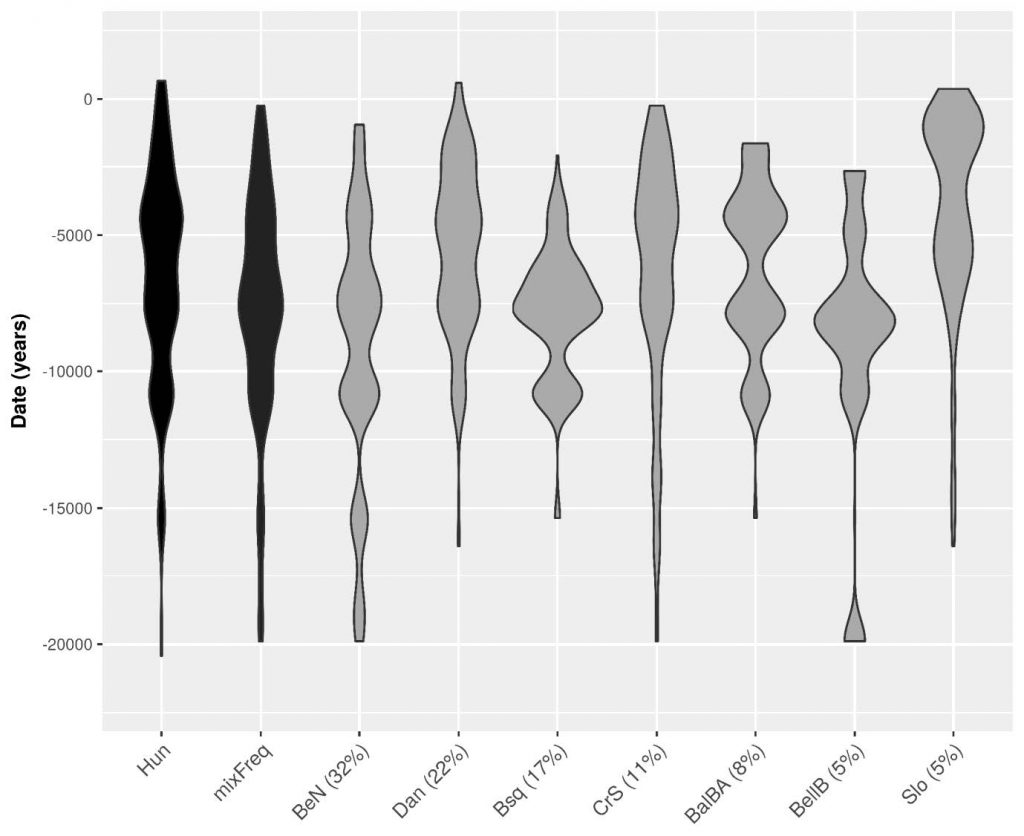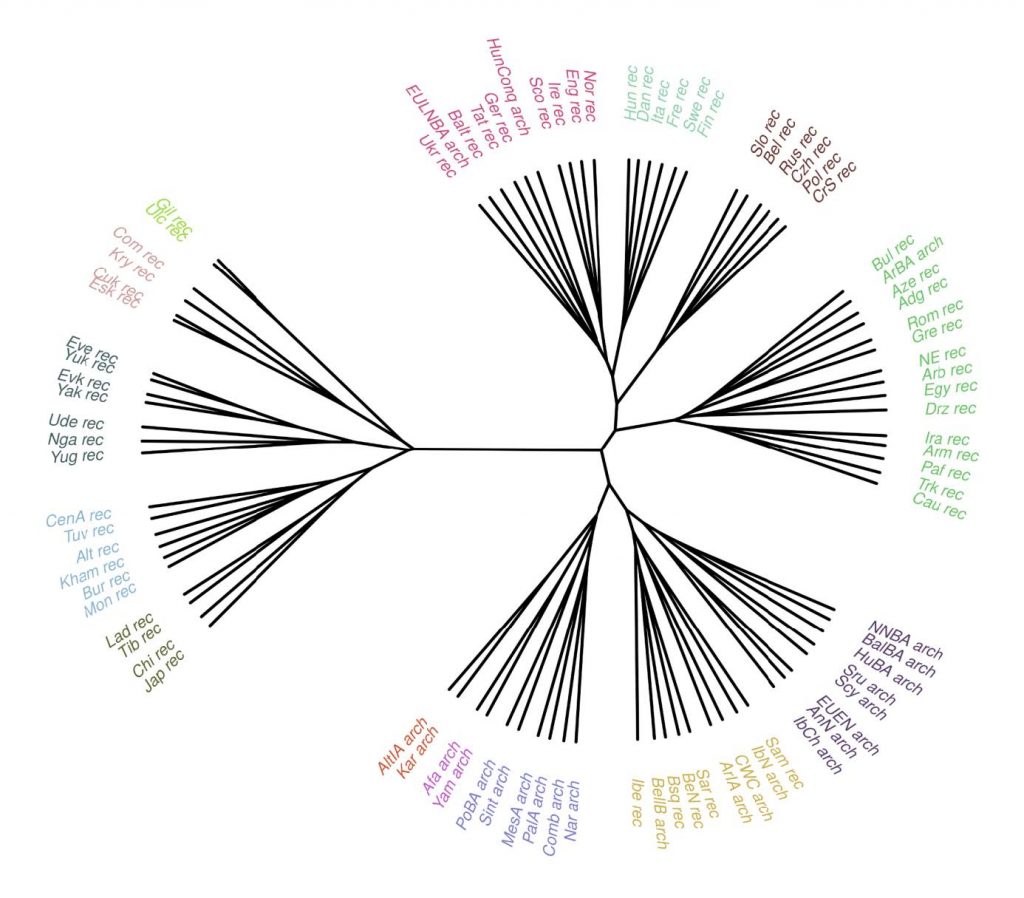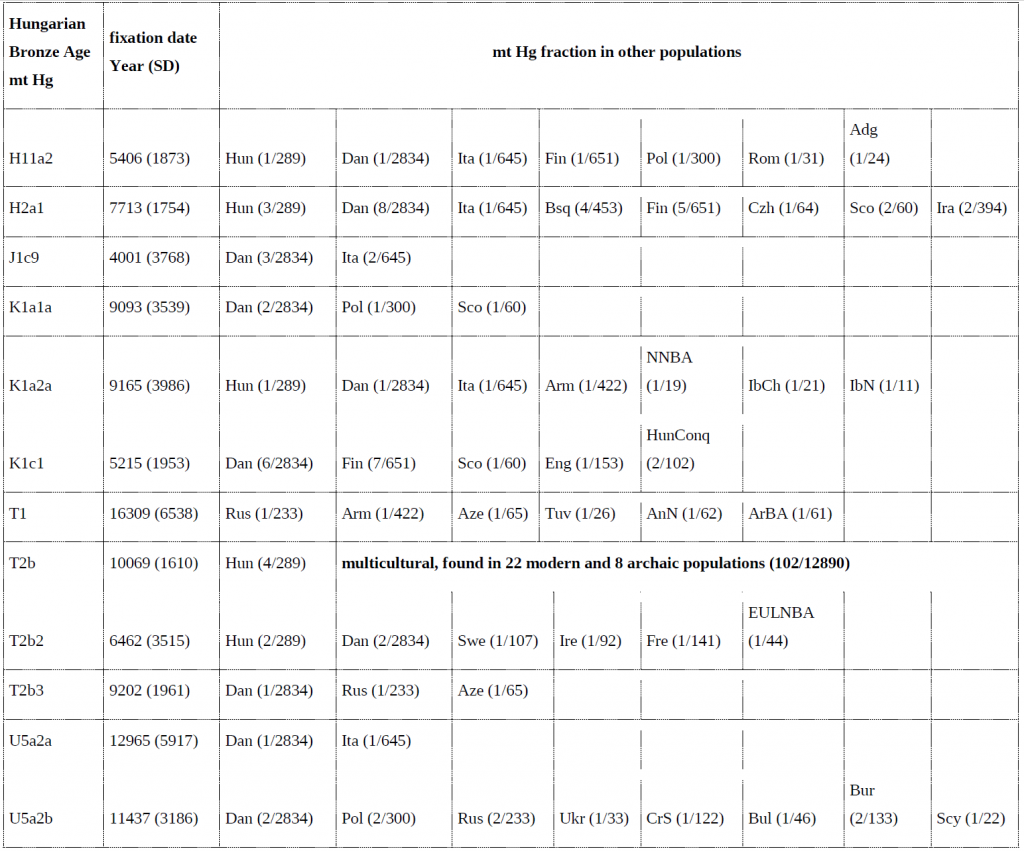New preprint at BioRxiv, MITOMIX, an Algorithm to Reconstruct Population Admixture Histories Indicates Ancient European Ancestry of Modern Hungarians, by Maroti et al. (2018).

Abstract (emphasis mine)
By making use of the increasing number of available mitogenomes we propose a novel population genetic distance metric, named Shared Haplogroup Distance (SHD). Unlike FST, SHD is a true mathematical distance that complies with all metric axioms, which enables our new algorithm (MITOMIX) to detect population-level admixture based on SHD minimum optimization. In order to demonstrate the effectiveness of our methodology we analyzed the relation of 62 modern and 25 ancient Eurasian human populations, and compared our results with the most widely used FST calculation. We also sequenced and performed an in-depth analysis of 272 modern Hungarian mtDNA genomes to shed light on the genetic composition of modern Hungarians. MITOMIX analysis showed that in general admixture occurred between neighboring populations, but in some cases it also indicated admixture with migrating populations. SHD and MITOMIX analysis comply with known genetic data and shows that in case of closely related and/or admixing populations, SHD gives more realistic results and provides better resolution than FST. Our results suggest that the majority of modern Hungarian maternal lineages have Late Neolith/Bronze Age European origins (partially shared also with modern Danish, Belgian/Dutch and Basque populations), and a smaller fraction originates from surrounding (Serbian, Croatian, Slovakian, Romanian) populations. However only a minor genetic contribution (<3%) was identified from the IXth Hungarian Conquerors whom are deemed to have brought Hungarians to the Carpathian Basin. Our analysis shows that SHD and MITOMIX can augment previous methods by providing novel insights into past population processes.

It is interesting to keep receiving data as to how language does not correlate well with Genomics, whether admixture or haplogroups, even though it is already known to happen in regions such as Anatolia, the Baltic, South-Eastern or Northern Europe.
Thorough anthropological models of migration or cultural diffusion are necessary for a proper interpretation of genetic data. There is no shortcut to that.

Images made available under a CC-BY-NC-ND 4.0 International license.
See also:
- Science and Archaeology (Humanities): collaboration or confrontation?
- Massive Migrations? The Impact of Recent aDNA Studies on our View of Third Millennium Europe
- Human ancestry solves language questions? New admixture citebait
- The new “Indo-European Corded Ware Theory” of David Anthony
- The renewed ‘Kurgan model’ of Kristian Kristiansen and the Danish school: “The Indo-European Corded Ware Theory”
- Correlation does not mean causation: the damage of the ‘Yamnaya ancestral component’, and the ‘Future America’ hypothesis
- New Ukraine Eneolithic sample from late Sredni Stog, near homeland of the Corded Ware culture